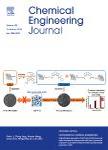版权所有:内蒙古大学图书馆 技术提供:维普资讯• 智图
内蒙古自治区呼和浩特市赛罕区大学西街235号 邮编: 010021

作者机构:Dalian Univ Technol Sch Chem Engn Ocean & Life Sci Panjin 124221 Peoples R China Dalian Univ Technol Leicester Int Inst Panjin 124221 Peoples R China Univ Buffalo State Univ New York Dept Chem & Biol Engn Buffalo NY 14260 USA China Jiliang Univ Dept Mat Sci & Engn Hangzhou 310018 Peoples R China
出 版 物:《CHEMICAL ENGINEERING JOURNAL》 (化学工程杂志)
年 卷 期:2024年第494卷
核心收录:
学科分类:0830[工学-环境科学与工程(可授工学、理学、农学学位)] 0817[工学-化学工程与技术] 08[工学]
基 金:Fundamental Research Funds for the Central Universities [DUT22LK09] Open Foundation of Key Laboratory of Industrial Ecology and Environmental Engineering, MOE [KLIEEE-21-02] Foundation of State Key Laboratory of High-efficiency Utilization of Coal and Green Chemical Engineering [2022-K70] Undergraduate Innovation and Entrepreneurship Training Program of the Dalian University of Technology Hefei Advanced Computing Center
主 题:Zinc-ion battery Material design Mechanism Density functional theory Molecular dynamic simulation
摘 要:Zinc ion batteries (ZIBs) are promising candidates for rechargeable energy storage devices due to their high energy density, high safety, and low cost. The theoretical calculation study has substantially helped the understanding of the intrinsic properties of battery materials and the electrochemical reaction mechanism, which are essential for developing the next generation of high-performance battery systems. In this review, we summarized the use of density functional theory (DFT) calculations and molecular dynamic (MD) simulations in the area of ZIBs, including how to utilize computational chemistry to analyze the ion migration path, evaluate battery performance, and search for material features. Together with a theoretical study, we arrived at a result and recommended future paths for the cathode, anode, electrolyte, and additive development in ZIBs. Specifically, contents are the following: anode engineering, additive selection, electrolyte screening, underpotential deposition (UPD), and the development of cathode varieties (such as halogen, V-based, organic, and Mn-based cathodes). We discussed the advantages and disadvantages of computational chemistry, demonstrating its uses in ZIBs research and highlighting its prospective contributions to the materials sciences and ZIBs development. This account promotes future efforts toward developing theoretical and experimental studies of ZIBs and related material science in rechargeable energy storage applications.